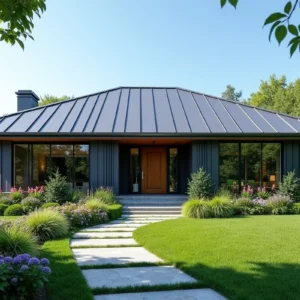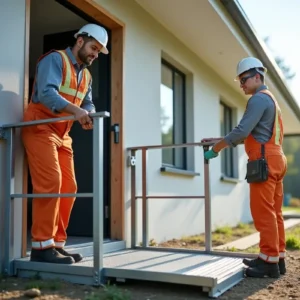The choice of materials is critical in building durable and safe horse barns. Use high-quality, non-toxic materials that can withstand horses’ wear and tear. For example, treated wood or steel can offer both strength and longevity.
Wood is traditional and provides a warm, natural atmosphere, whereas steel can be less maintenance-intensive and fire-resistant. Additionally, consider using insulation to keep the barn temperature stable year-round, which is crucial for the comfort and health of the horses.
Using materials like rubber mats on the floors can provide additional comfort and safety for the horses, reducing the risk of slips and injuries. Furthermore, selecting materials that are easy to clean and resistant to moisture can help maintain a hygienic environment.
Contents
Ventilation and Airflow
Proper ventilation is vital for maintaining a healthy environment in your horse barn. Good airflow helps reduce the buildup of harmful gases like ammonia, which can emanate from urine and manure and keeps the barn cool during hot weather.
Ventilation can be achieved through windows, roof vents, and mechanical fans. Implementing large, operable windows and ridge or eave vents allows for natural ventilation, effectively moving fresh air throughout the barn.
Ensuring good ventilation helps minimize respiratory issues in horses, which can be common in poorly ventilated spaces. A well-ventilated barn can also help control humidity and prevent mold growth, contributing to the overall well-being of the horses. Studies have shown that proper ventilation can reduce respiratory issues in horses.
Lighting Essentials
Ample lighting is essential for the safety and convenience of horse handlers and horses. To make use of daylight as much as possible, incorporate natural light through skylights or strategic window placement. Natural light creates a pleasant environment and helps regulate the horses’ circadian rhythms, promoting better health.
For artificial lighting, energy-efficient LEDs are recommended, as they provide bright and consistent light without generating excessive heat. Thoughtfully placed overhead lights and task lighting in areas like stalls, aisles, and tack rooms can enhance visibility and safety. Adequate lighting also helps in the early detection of health issues, as handlers can see and monitor the horses more effectively.
Stall Design and Layout
The design and layout of stalls are crucial for your horses’ comfort. Each stall should be spacious enough for the horse to move freely and comfortably. A standard stall size is usually 12×12 feet, but this can vary depending on the size and breed of the horse. Flooring should be non-slip and easy to clean to maintain hygiene. Materials such as rubber mats or interlocking pavers can provide cushioning and reduce the risk of injury.
Partition walls between stalls should be sturdy and designed to prevent horses from kicking through them, which could result in serious injury. Think about arranging stalls to allow for easy access and efficient cleaning.
Grouping stalls in a particular layout, such as in a U-shape or face-to-face format, can also help improve ventilation and lighting distribution, making the barn more comfortable for the horses and more functional for the handlers.
Feed and Tack Rooms
Designing dedicated feed and tack rooms can help keep the barn organized and functional. A well-planned feed room should be dry, cool, and pest-proof to ensure the quality and safety of the feed. Shelves, bins, and racks can help organize different types of feed and supplements efficiently, making feeding time quicker and easier.
Similarly, a tack room should have adequate storage solutions for saddles, bridles, grooming tools, and other equipment. Proper shelving, hooks, and saddle racks can help keep the equipment organized and in good condition. Ensure these rooms are easily accessible from the stalls to streamline daily routines and minimize the need to carry heavy items long distances.
Accessibility and Traffic Flow
Efficient traffic flow in and around the barn can make daily chores easier and minimize stress for horses and handlers. Consider wide aisles and strategic placement of doors and gates to allow smooth movement of horses, equipment, and handlers. Aisles should be 12 feet wide for safe passage, especially when moving or handling horses.
Additionally, areas where horses are groomed or washed should have non-slip surfaces and be equipped with the necessary drainage systems to prevent water accumulation. Ensuring that all areas of the barn are easily accessible and well-lit can improve efficiency and enhance safety, reducing the risk of accidents and injuries.
Safety Features
Implementing safety features is non-negotiable. Install fire extinguishers and smoke detectors and ensure there are clear emergency exits. Regularly inspect these safety devices to ensure they are in good working condition and easily accessible in an emergency.
Additionally, all electrical installations should be horse-proof to prevent accidents. This includes using conduit to cover all exposed wiring and placing outlets and switches out of reach of curious horses.
Safety features also extend to the design of the stalls and fences. Rounded edges, secure latches, and escapes-free stall doors enhance the overall safety of the barn. Implementing these measures can significantly reduce the risk of injuries and provide peace of mind for the horse owners and handlers.





